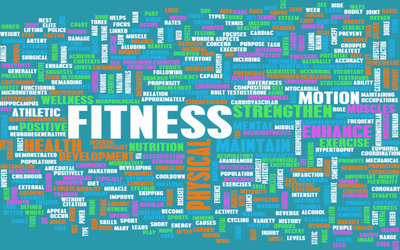Which of 2014’s Fitness Trends Will Go the Distance?
If you want to know the hot fitness trends this year, you need to ask the experts. Walter Thompson, a professor of kinesiology and health at GeorgiaState, is the lead author of an AmericanCollege of Sports Medicine survey predicting what will be hot in gyms this year. He comments, ‘At this time of year, everyone’s trying to sell machines and gadgets, and people buy them by the millions. And within three months, you find them in a closet or under the bed. We’re trying to focus on things that are effective and going to be around for some time.’ So, with wellness expert Angela Haupt, an editor with the Health and Wellness section at US News, Thompson is sharing his top tips for fitness in 2014.
1. Body Weight Training: Thompson explains that body weight training is ‘kind of like back-to-basics exercise, and it started to emerge as a trend in 2008, when we started seeing a downturn in the economy.’ Haupt points out, ‘Don’t feel like lugging equipment around? Body weight training requires only, well, your own weight, used as a form of resistance training – think push-ups and pull-ups. It’s an inexpensive, effective way to work out…These regimens can help you gain strength, build muscle, boost your heart health, increase flexibility and burn fat.’
2. Functional Fitness: Haupt details, ‘Older adults and those recovering from injuries benefit from such strength-training regimens, which imitate daily activities. A client who lost strength and stamina after several weeks in the hospital, for example, may struggle to cut his grass even with a self-propelled mower. His instructor will create a programme mimicking the motions required for that activity. Or someone could desire to carry his own grocery bags out of the store instead of relying on a helper. The functional fitness solution: an upper-body strength training programme geared toward lifting and carrying heavy bags.’
3. Fitness Programmes for Older Adults: Thompson outlines, ‘The really smart commercial clubs recognise there’s a period of time in the morning, typically between 9 and 11am, and then between 2 and 4 in the afternoon, when the older crowd is coming in.’ Why is this such a big deal? ‘The baby boomer generation is aging into retirement, and many of these folks have more discretionary money than their younger counterparts,’ says Haupt. ‘That’s why some gyms are creating age-appropriate fitness programmes that cater to older adults. For starters, they’re making working out appealing by turning down that pulsating music. Senior-friendly gyms are also modifying classes so they’re lower impact and can, say, accommodate someone who uses a cane.’
4. Group Personal Training: Haupt comments, ‘During the recession, personal trainers began offering group options – training two or three people at a time. It’s an appealing strategy that makes sense, [and] the group setting typically doesn’t take away from the personal attention clients need and want.’ Thompson explains, ‘The client gets significant discounts, and the trainer can work with three people at the same time instead of one. Even if you give a steep discount, maybe 30%, you’re still making twice as much money in that same hour.’
5. Yoga: Thompson speculates as to one reason why, year after year, yoga remains popular. ‘The yoga folks keep re-inventing themselves,’ he says. ‘Even though the basic format is the same, they change it enough to keep people interested.’ Haupt suggests, ‘Consider: antigravity yoga, which mixes yoga poses with acrobatics while suspended in the air; karaoke yoga, which aims to strengthen the limbs and vocal chords; and broga, which is geared toward men. That creativity keeps people coming back.’


Comments are closed.